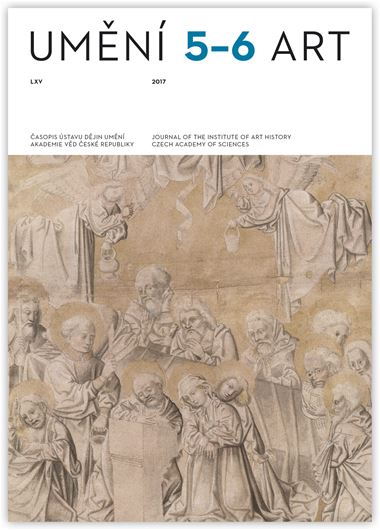Marie Fiřtová
Freska Kosmy Damiána Asama v kostele na Bílé Hoře jako
manifest bavorských mocenských aspirací
The article analyses the iconography of the central fresco in the pilgrimage Church of Our Lady of Victory in Bílá hora (White Mountain) by Bavarian artist Cosmas Damian Asam (1727–1728). The painting, which commemorates the triumph of the Catholic Church being celebrated by Bohemian patron saints, is almost without exception interpreted as a commemoration of the fateful battle that took place at this same location. This article explores one level of interpretation of the painting’s conceptual programme, which relates to the political ambitions of the Bavarian Wittelsbach family at that time. It ties in with and builds on an idea put forth by Pavel Preiss (V. V. Reiner, 2013), who described the painting as an expression of Bavarian patriotism in the political-cultural context of the first half of the 18th century. In support of this interpretation the author tries to identify in the fresco anything indicative of a dynastic union between the Habsburg and Wittelsbach families, aspirations for the imperial crown, the birth of offspring, or a possible crypto-portrait of Max Emanuel, the ruler who single-mindedly set Bavaria on its course. This figure would represent an analogy with the victor in the Battle of White Mountain, Maximilian I, who was regarded with great esteem in Munich. This theory would be consistent with the double meaning behind the painting’s subject matter, which was characteristic of contemporary Bavarian propaganda, which was rich in metaphors, symbols, and hidden references. The article reflects the situation in the Munich court, where White Mountain was viewed as a place closely associated with Wittelsbach family history and it touches on the matter of who may have come up with the idea for the painting — it may have been Franz Xaver Ignaz von Wilhelm, secret secretary to the Bavarian prince-electors. Von Wilhlem must have worked with Asam as there exist prints that the two of them created together. Given the prominent location of the painting and the significance of the site for the collective memory of the Wittelsbachs of Bavaria, the above interpretation may be one way of uncovering the multiple dimensions of its programme.
Full-text in the Digital Library of the Czech Academy of Sciences:
https://kramerius.lib.cas.cz/uuid/uuid:d68baf0e-0d9c-4e7b-926a-bbd59eb2c198
< back

